Beijing, a city that serves as the heart of China, blends modern technologies with ancient marvels. This city offers a unique mix of cultures, cuisines, and architecture which is a delight to every traveler. Through this blog, I plan to cover various attractions including notable historical sites like the Forbidden City and Great Wall along with other serene natural escapes such as the Summer Palace, and urban ones like the Wangfujing markets. So, regardless if you are a nature, history, or urban enthusiast, this guide will equip you with the necessary resources to explore the finest sights in Beijing.
What Are the Top Tourist Attractions in Beijing?
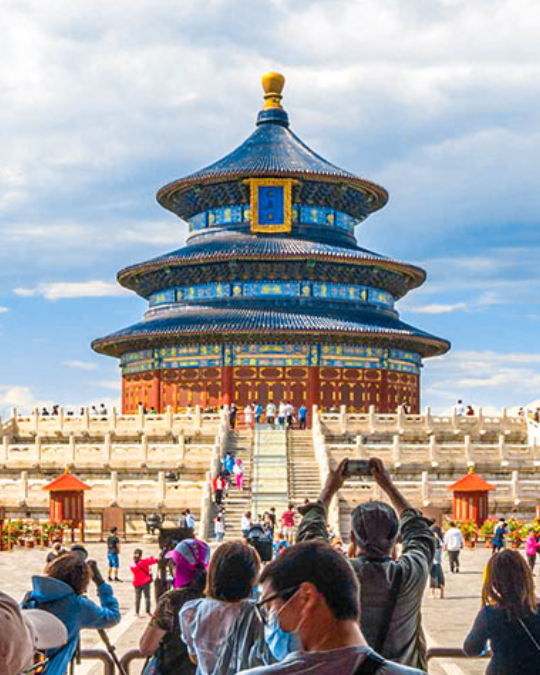
What Are the Top Tourist Attractions in Beijing
Beijing, a city that serves as the heart of China, blends modern technologies with ancient marvels. This city offers a unique mix of cultures, cuisines, and architecture which is a delight to every traveler. Through this blog, I plan to cover various attractions including notable historical sites like the Forbidden City and Great Wall along with other serene natural escapes such as the Summer Palace, and urban ones like the Wangfujing markets. So, regardless if you are a nature, history, or urban enthusiast, this guide will equip you with the necessary resources to explore the finest sights in Beijing.
Exploring the Forbidden City: A Journey Through Chinese History
Designated as a UNESCO World Heritage Site, the Forbidden City in Beijing was home to over twenty-four emperors for a millennium during the Ming and Qing dynasties, enveloped by a city that encapsulated 980 structures set across 180 acres of land. The region known as Central Beijing houses a stunning example of Chinese courtyard-style palace architecture that blended cosmology and design, as it was constructed between 1406 and 1420 under the rule of emperor Yongle. Ancient Chinese sociopolitical and cosmological principles are captured within this masterpiece of symmetrical design foretelling the emperors’ hierarchies.
The Hall of Supreme Harmony and the Palace of Heavenly Purity are both residing within the Forbidden City, with the former acting as the living quarters of the emperor while the latter bears the title of the oldest building in the palace. Banqueting and ceremonial functions hosted within these structures are immediately expressed by the golden-glazed roof tiles, delicate marble foundations, and the exquisitely detailed wooden carvings that constitute the architecture.
An excursion to the Forbidden City sheds light on China’s extraordinary history and culture today. For visitors, a ticket goes for 60 RMB ($8.50) during the peak season of April to October, while it costs 40 RMB ($5.65) for the off-season of November to March. The average duration of a visit is 2-3 hours which includes guided tours with audio guides offered in various languages. The city is reachable by subway through Tiananmen East or West stations, making it easier for tourists. The site is one of the finest preserved attractions in China. Visitors are advised to make bookings in advance to avoid overcrowding.
Why Visit the Great Wall of China: A Timeless Attraction
Walking the Great Wall of China is a must for anyone fascinated by history, culture, and beautiful scenery. As one stands on this age-old structure, the sheer measurement and intricacy which went into building it, leaves one awestruck. While traversing, the wall gorges out over strenuous terrain, providing breathtaking views and a glimpse of the brilliance of ancient Chinese engineering. With each step, the wall reveals more of its magnificence making it incomprehensible as to why it is considered one of the modern wonders of the world.
The Summer Palace: A Glimpse into the Ming and Qing Dynasties
The Summer Palace is a breathtaking site showcasing Ming and Qing dynasty gardens set amid Kunming Lake. Also serving as a summer retreat for emperors, it features serene lakes, intricately built pavilions, and meticulously designed gardens. During my visit, I was mesmerized by the blending of natural beauty and human craftsmanship on full display on Longevity Hill with Kunming Lake at the bottom. The Summer Palace is the perfect representation of what classical China has to offer with its astonishing and rich history.
How to Make the Most of Your Trip to Beijing?
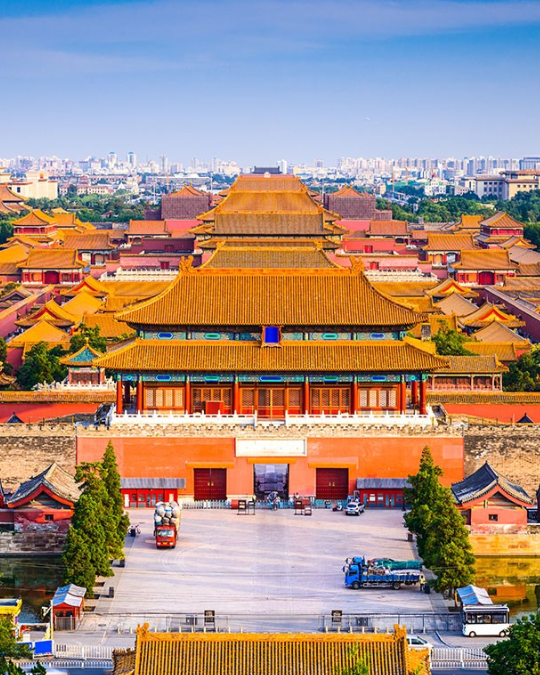
How to Make the Most of Your Trip to Beijing
To get the most out of your trip to Beijing, start planning your itinerary with historical sites, such as the Great Wall, The Forbidden City and Summer Palace. It is essential to set aside enough time to navigate through each site, given their cultural and historical importance. Save time and money by using the public transportation system, including the efficient subway. Local markets and traditional restaurants offer the best Chinese cuisine and should not be missed. Finally, be mindful of the seasons when visiting; spring and autumn offer both picturesque views and comfortable weather.
Best Time to Visit Beijing: Weather and Festivals
The best time to travel to Beijing is in the spring (March to May) and fall (September to November). These periods have moderate temperatures, no possibility of precipitation, and rich beautiful scenery of nature which makes visiting places like the Great Wall or the famous parks in the city, much more enjoyable. During the spring season, flowers blossom and the weather is generally very pleasant, later in the fall foliage turns golden and air becomes fresher.
People interested in festivals, spring for sure is the best time to celebrate the Beijing International Long-Distance festival alongside the Qingming Festival, also known as Tomb-Sweeping Day, giving insights into the ancient Chinese culture. Along with the Mid-Autumn festival, which has various customs like eating mooncakes and adorning lanterns, and National Day celebrations in October where there are lots of parades and cumulating shows, mark autumn. Not only do these times provide good temperatures for great sightseeing but also an opportunity to experience the rich culture and traditions of the people.
Getting Around Beijing: Transportation Tips for Tourists
Beijing is well-equipped with an extensive and efficient transportation network, making it easy for tourists to explore the city. Here are some essential tips to help you get around:
- Subway System: The Beijing Subway is the fastest and most convenient way to travel. It has 27 lines covering most attractions and major areas. Fares range from ¥3 to ¥10, depending on distance, and trains operate from 5 AM to 11 PM. Purchase a rechargeable Beijing Transportation Card for seamless access.
- Buses: For routes not covered by the subway, buses are a reliable option. A transportation card also works on buses, reducing fare costs to just ¥0.40 for short distances. Be mindful of traffic during peak hours.
- Taxis and Ride-Hailing Apps: Taxis are widely available, with fares starting at ¥13 for the first 3 kmAn error occurred during generation. Please try again or contact support if it continues.
Where to Stay in Beijing: Choosing the Perfect Accommodation
Beijing offers a wide variety of accommodations, catering to different budgets, preferences, and purposes of travel. Here are some key options to consider:
- Luxury Hotels: For a premium experience, consider staying in renowned hotels like the Rosewood Beijing or the Waldorf Astoria. These hotels provide world-class amenities such as fine dining, spa services, and prime locations near popular attractions like Tiananmen Square and the Forbidden City. Prices typically start at $300 per night.
- Mid-Range Hotels: For travelers seeking affordability without compromising on comfort, mid-range options include chains like Holiday Inn Express and local boutique hotels such as Hotel Kapok. These generally cost between $80 and $150 per night and often include amenities like free breakfast, Wi-Fi, and convenient proximity to public transport.
- Budget Accommodations: Hostels and budget-friendly guesthouses such as Peking Yard Hostel or 161 Hotel are perfect for backpackers or cost-conscious travelers. Prices range from $20 to $50 per night. While basic, these accommodations often foster a social atmosphere and are located in areas like the Hutongs, giving access to rich cultural experiences.
- Serviced Apartments: Ideal for long-term stays or families, serviced apartments like those offered by Ascott Raffles City provide kitchen facilities, larger living spaces, and services such as laundry. Costs range from $150 to $300 per night.
- Airbnb and Homestays: For a more local experience, Airbnb and traditional homestays can be excellent choices. Countryside homestays offer a peaceful retreat, while city-based options provide affordability and local immersion.
Things to Consider:
- Proximity to Attractions: Stay near sights like the Forbidden City, and Temple of Heaven, or bustling areas like Wangfujing for easy access to landmarks.
- Public Transportation Access: Choose a location near subway lines to simplify travel across the city.
- Seasons and Budget: Summer and major Chinese holidays such as Golden Week can see higher accommodation prices, so plan accordingly.
By carefully assessing your preferences, budget, and travel goals, you’ll find the perfect place to stay in Beijing that ensures a comfortable and memorable visit.
What Are the Must-See Historical Sites in Beijing?
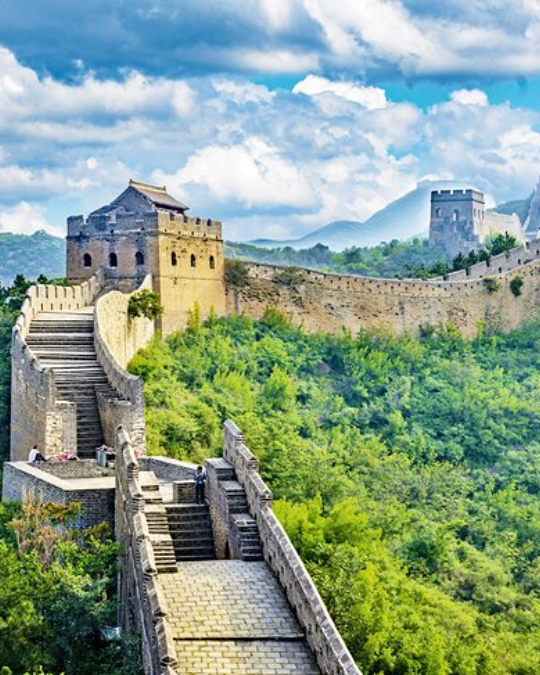
What Are the Must-See Historical Sites in Beijing
With its remarkable landmarks, Beijing is one of China’s most popular cities. Begin with the massive palace complex known as The Forbidden City, which was the imperial palace for nearly 500 years. From The Forbidden City, one can spot Tiananmen Square, a critically important historic and political site. As you go on the architectural tour of the city, make sure to see the Temple of Heaven where emperors prayed for favorable weather during harvest. If you want to appreciate what life was like in ancient Beijing, walking through the Hutongs will surely provide some astonishing insights. To complete your visit, spend some time gaining the stunning views surrounding The Great Wall of China at Badaling or Mutianyu.
The Temple of Heaven: A Symbol of Traditional Chinese Culture
The Temple of Heaven in Southern Beijing is an astounding piece of architecture built during the Ming Dynasty. The hall represents the intimate relationship between the religion and culture of China. The Hall of Prayer for Good Harvests is an exquisite combination of philosophy and art. It is a circular structure resting on a square base. The square symbolizes Earth and the circle Heaven. This duality reflects the ancient Chinese notion of heaven and earth existing together.
The diameter of the Hall of Prayer for Good Harvests is 36 meters and its height is approximately 38 meters. The structure’s roof is elaborately designed with three layers of eaves decorated in blue glazed tiles that represent the sky. The entire waiting Hall was built out of wood without the use of a single nail. It is significant as a ceremonial site and, therefore, it is approximately 2.7 million square meters. Its layout and design definitely follow the principles of cosmology and feng shui showing its importance in history and culture.
Visiting the Ming Tombs: Exploring the Burial Sites of Emperors
The Ming Tombs are found in China, a place near Beijing, and are the mausoleums of 13 emperors of the Ming dynasty. Encompassing more than 40 square kilometers, the site exhibits Chinese architecture and history. During my visit, I was amazed by the Sacred Way, edged with stone figures of animals and officials as guardians who show reverence to the dead. The principal tombs, among which are Changling and Dingling, were a great revelation in the understanding of the burial rites and artistic craftsmanship of the era. Visiting these tombs made me appreciate the legacy and influence of one of the most powerful dynasties of China.
Discover the Beijing Ancient Observatory: Ancient Astronomy in the Heart of Beijing
At the Chinese Ancient Observatory, the Astronomy collections and creations of ancient China can be observed in awe. The unique bronze-made celestial instruments such as armillary spheres and bronze globes were expertly crafted during the Ming Dynasty in 1442. Chinese Astronomers crafted these instruments illustrating their amazing innovation and skill. Platforms that stand at an impressive height of 15 meters enable users to examine seasons and stars. Being able to visit this combination of history and science in person was truly inspirational.
What Are the Best Things to Do in Modern Beijing?
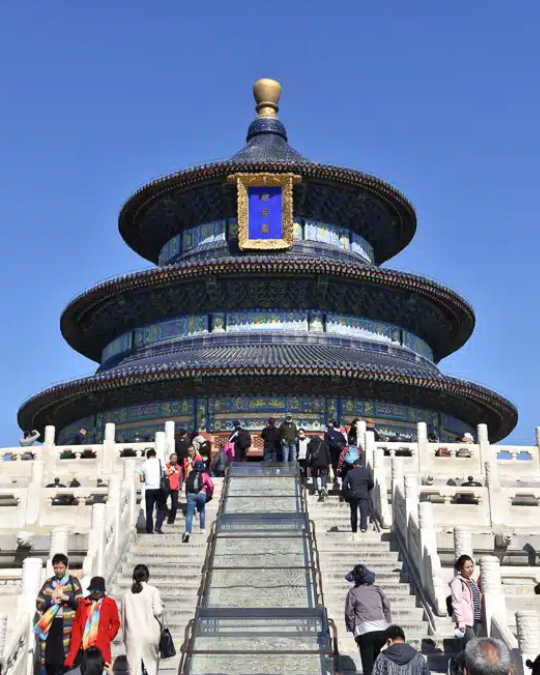
What Are the Best Things to Do in Modern Beijing
Modern-day Beijing is a perfect blend of stunning city life and unique attractions. A visit to the lavish 798 district is a must. The trendy cafes, boutiques and contemporary art galleries blend to form a hub of creativity. Sanlitun is the go-to place for shopping where international brands can be found in extravagant malls. Technology enthusiasts should check out the city’s tech hub, Zhongguancun, often referred to as the ‘Silicon Valley’ of China. One can also visit the astounding National Centre for the Performing Arts or step away from the hustle and bustle of the city Chaoyang Park. That, paired with visits to malls and artists, makes Beijing a stunning blend of life, relaxation, art and innovation.
Exploring the Beijing Olympic Park: Reliving the 2008 Games
As a hallmark that is proportionate to China’s unrivaled hosting of the Summer Olympics in 2008, The Beijing Olympic Park has a vast expanse of 11.59 square kilometers. The National Stadium and the National Aquatics Center, which are marvels of engineering, modern architectural design and innovation, are commonly referred to as The Bird’s Nest and Water Cube, respectively. One of the main symbols of China, The Bird’s Nest, hosted 80,000 fans during the Olympics and was designed by Herzog & de Meuron. Another striking feature of The Bird’s Nest is the distinctive steel lattice structure that encapsulates the building. With its bubble-shaped bold facade which is based on a molecular structure, The Water Cube is used to host swimming and diving events and is now known for housing a water park along with other leisure activities.
There are two sections to the Olympic Forest Park. These areas are green spaces that have environmental value and also provide recreational activities for visitors. The use of advanced water management technologies, like the collection of rainwater, is also put into practice in the park. In the evening, the area is stunning when the Bird’s Nest and the Water Cube are illuminated. Watering holes for casual visitors and regular commuters are well provided at Olympic Park which is an impressive fusion of modern sporting culture, contemporary engineering, and environmental integration. Olympic Park is effortlessly accessible via Line 8 subway. Without a doubt, the park is one of the remarkable places to visit in Beijing.
Universal Studios Beijing: Family Fun and Entertainment
Universal Studios Beijing is a terrific destination for family leisure and entertainment. There are Inverted roller coasters based on famous movies like Transformers and Jurassic World, lively parades, and Minion and Harry Potter-themed areas. Everything is worth experiencing. The park also features world-class restaurants and shops which ensures unforgettable experiences for children and adults alike.
What Are the Essential Cultural Experiences in Beijing?
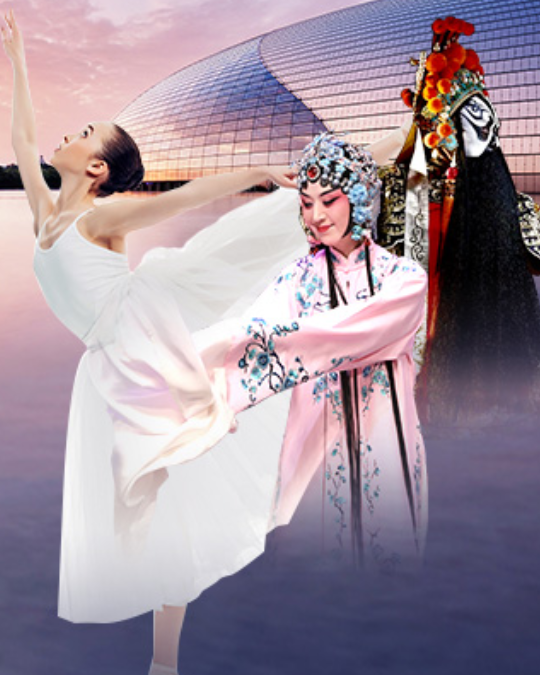
What Are the Essential Cultural Experiences in Beijing
Beijing has plenty of cultural heritage to offer along with innumerable experiences. Start by visiting The Forbidden City, a sprawling palace complex that resembles the Imperial past of China. Walk through the Temple of Heaven, an architectural wonder where emperors prayed for good harvests. The traditional hutongs, and alleyways with courtyard houses, showcase the local life and history. No visit is complete without seeing the Great Wall of China at Chinese walls like Mutianyu, which offers views of the ancient structure. Finally rounds up the experience by attending a Peking opera or a night of Chinese acrobatics.
Witnessing Beijing Opera: A Unique Chinese Art Form
Peking Opera is one of the treasured cultural performing arts of China, blending singing, dancing, acting, fighting and other stunning forms of artistic expression in an exquisite way. With more than 200 years of existence, it began in the Qing Dynasty and has continued to be a major representation of the Chinese culture. The performances stand out for their highly ornate costumes, dazzling facial makeup, as well as their clear and sharp voices. Together, these components create a mix of dramatic performance and figurative representation.
In a traditional performance of Beijing Opera, a bare stage and few props are used, depending on the performers’ body movements along with facial expressions to tell complex stories. The two vocal ranges “xipi” and “erhuang: serve as the main foundation of its music style, with accompaniment of clashing instruments like the jinghu – a two-stringed violin and percussion. The red makeup color denotes bravery and loyalty, while black stands for good character. Seeing a Beijing Opera performance is very culturally enriching as it reveals the diverse history and artistic talents of China.
Sampling Beijing’s Culinary Delights: A Foodie’s Guide
The capital city of China, Beijing, has a variety of different cuisines reflecting its tremendous past. One sublime dish that fits every food mentioned is Peking Duck which has crispy skin with tender meat and is served with pancakes along with sweet sauce. Another wonder is jianbing, a popular street food serving a fusion of crepes, eggs, and herbs, offering a scrumptious breakfast. For daring ones, street markets serve scorpions, starfish, and many more exotic grilled specialties.
Make sure to sample Zhajiangmian noodle served with fermented soy paste during your culinary tour which is common in Beijing. Other fulfilling cuisines include dumplings, baozi, and steamed buns served with vegetables and other stuffed meats symboling the hardness and friendliness of the city. Moreover, don’t forget to try nai lao which is thickening yogurt served with other sweets. The words, what you eat is what you get with the cuisines in Beijing are astounding.
References
Frequently Asked Questions (FAQ)
Q: What are the top things to do in Beijing for first-time visitors?
A: For first-time visitors, exploring the Great Wall of China, visiting the Forbidden City, and wandering through the Summer Palace are among the top things to do in Beijing. These iconic attractions offer a deep dive into the city’s rich history and culture.
Q: How can I plan my Beijing trip to see the best attractions?
A: To plan your Beijing trip effectively, consider creating an itinerary that includes must-see places like the National Museum of China, the Temple of Heaven, and the Hutongs. Allocate a few days in Beijing to fully experience these attractions, and consider booking guided Beijing tours for a more informative visit.
Q: Is the Beijing National Stadium open to the public?
A: Yes, the Beijing National Stadium, also known as the “Bird’s Nest,” is open to the public. It’s a famous landmark from the 2008 Beijing Olympic Games and offers tours for visitors wanting to learn more about its architecture and history.
Q: What can I expect to see at the Beijing Zoo?
A: The Beijing Zoo is home to a wide variety of animals, including giant pandas, which are among the most popular attractions. The zoo offers visitors a chance to see numerous species and is a delightful experience, especially for families.
Q: What makes the Central Axis of Beijing a significant place to visit?
A: The Central Axis of Beijing is a historical and cultural landmark that stretches through the center of Beijing city. It includes important sites like Tiananmen Square and the Forbidden City, making it a significant place to visit for those interested in the historical development of the city.
Q: Are there any traditional Beijing experiences that visitors should not miss?
A: Visitors should not miss experiencing traditional Beijing culture by trying Beijing roast duck, exploring the ancient Hutongs, and attending a Peking Opera performance. These activities provide a taste of traditional Beijing and its rich cultural heritage.
Q: How can I get to the Universal Beijing Resort?
A: The Universal Beijing Resort is accessible via several transportation options, including the subway, buses, and taxis. It’s located in the city of Beijing, making it a convenient stop for those interested in entertainment and theme parks during their visit.
Q: What are some recommended Beijing tourist attractions for history enthusiasts?
A: History enthusiasts will find plenty to explore in Beijing, with attractions like the National Museum of China, the Ming Tombs, and the Temple of Heaven. These sites offer deep insights into the history and culture of the People’s Republic of China.
Q: What should travelers know about the Beijing Capital International Airport?
A: The Beijing Capital International Airport is one of the busiest airports in the world, serving as a major gateway for international and domestic flights. Travelers should plan their arrival and departure times in Beijing accordingly and consider transport options to and from the airport, such as the Airport Express train or taxis.